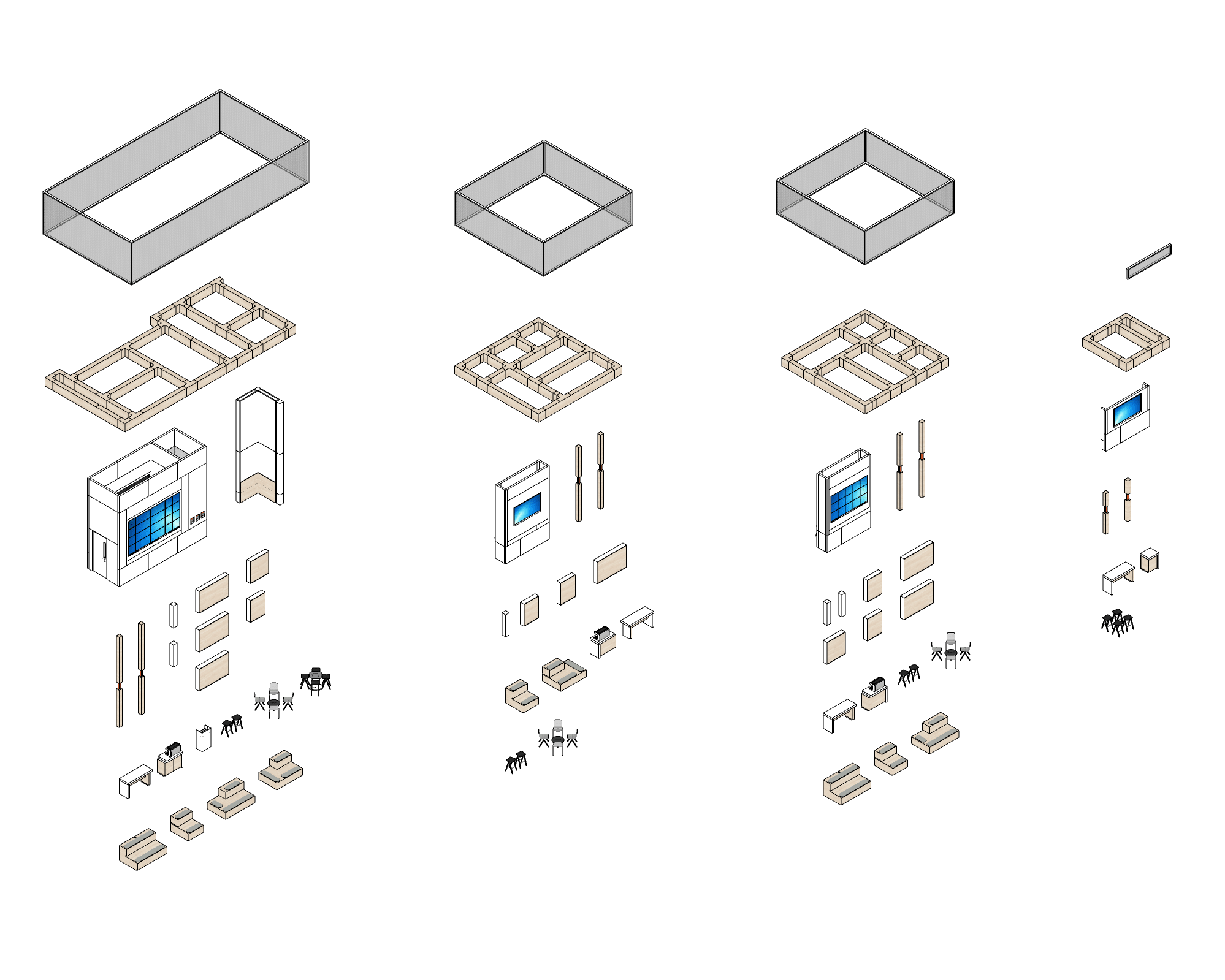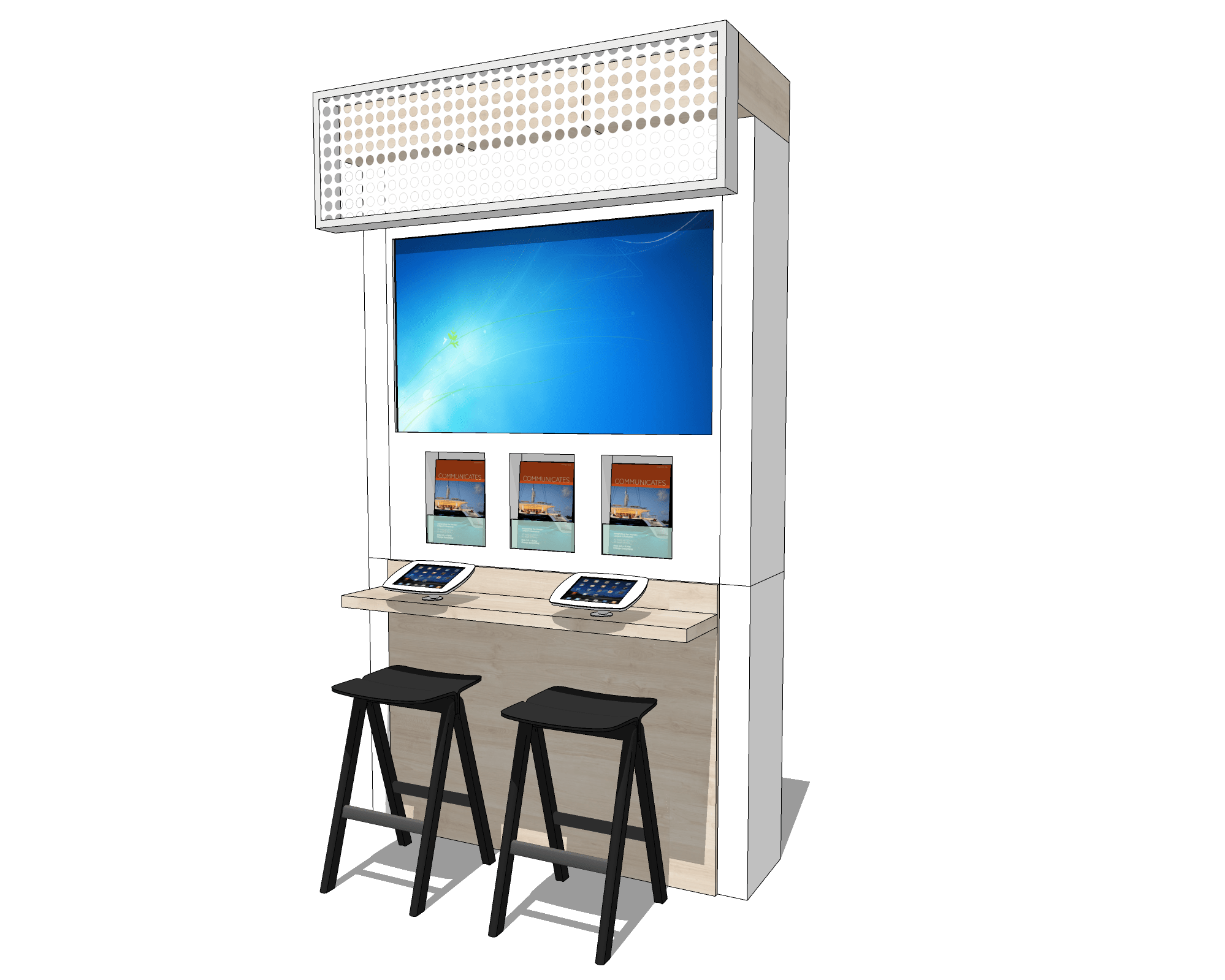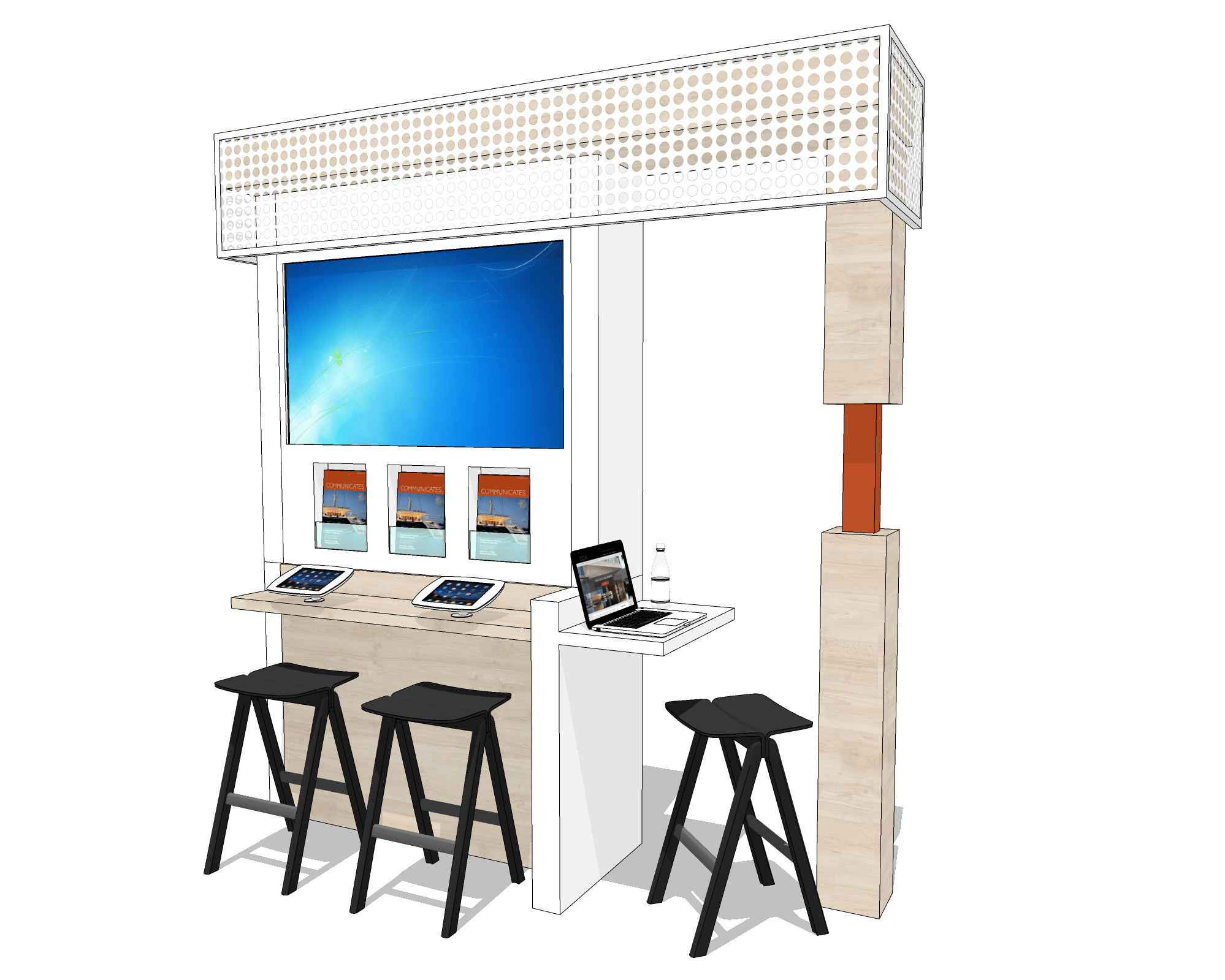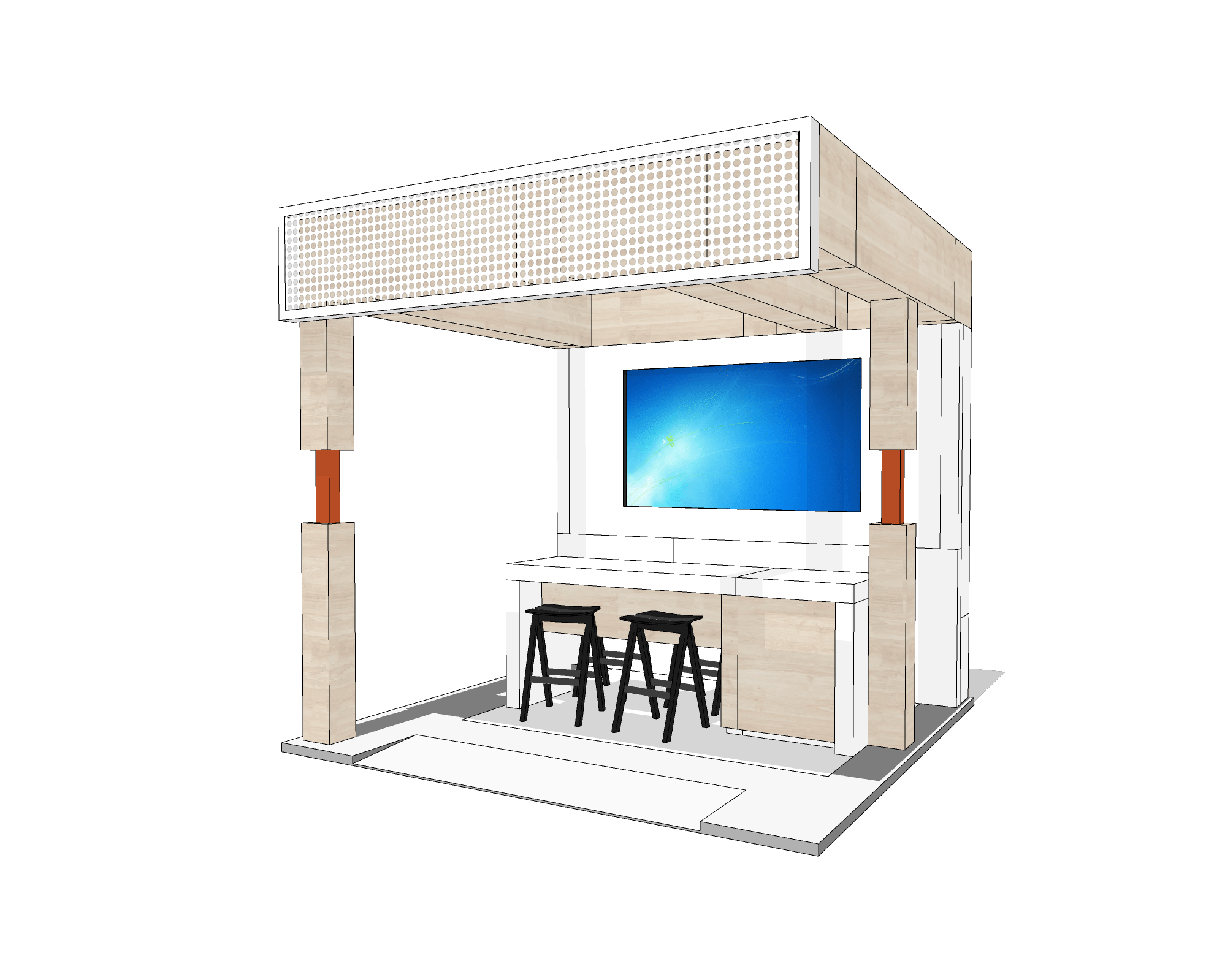Exhibiting a Greener Future
First published by DARC Magazine
Post-euroluce, darc asked Silka Mitchell, Group Creative Director, to discuss a sustainable approach to exhibition design.
The exhibitions industry used to be horrifically wasteful - and it would be untrue to say the ‘build and burn’ mentality has gone away completely. Globally, approximately 32,000 exhibitions take place each year, featuring 4.5 million exhibiting companies and attracting more than 303 million visitors, meaning there’s lot of potential wastage to be addressed. If you’re thinking of designing - or commissioning - a trade exhibition stand right now, the good news is that there are plenty of ways to make the process more sustainable and less wasteful, with lots of new ideas also coming onstream.
One element that has traditionally held back advances is the initial cost associated with more sustainable stand designs. Client businesses and procurement departments have a social responsibility not to go for the lowest bidder - as so many do - and to accept that the cost associated with not doing business sustainably is ultimately at the expense of the environment. Sure, the cost of a sustainable stand is larger upfront, but at the same time, if you choose a reconfigurable or modular kit (shown below), the payback becomes hugely cost-effective over the following years. As with so many sustainable decisions, it’s all about having a long-term vision.
Silka Mitchell, Group Creative Director, Ignition
For anyone who exhibits at several shows each year, a reconfigurable kit with a lifespan of 5-10 years can make a significant impact on reducing your carbon footprint. The other great advantage with a modular kit is that it can be adapted for other uses too, such as display areas in offices or retail pop-up installations. The best way to be sustainable right now is to combine re-use and recycling, with reuse the better option in terms of energy use. A re-usable kit made from 100% recycled materials, for example, would combine the best of both approaches. Also, with no two materials bonded together, this permits really simple disassembly and re-assembly.
Transportation is another area where energy savings can be made, through displays that fit into smaller vehicles. By using low-emission, pro-green vehicles or electric vans to transport exhibits to and from warehouses, the carbon footprint of exhibiting can be reduced by no small amount. You can also reduce the volumetric capacity of a display by using semi-rigid, rollable or tension-fabric graphics, which can be tucked away inside space-saving carry bags and graphics drums. For clients who want rigid graphics, you can design displays that piece together smaller graphic panels. Either way, opting for a lightweight, modular framework that can be taken apart and packed away with ease results in the smallest possible volume for transporting.
Lighting offers myriad innovative and energy-efficient alternatives right now, from ever-reputable LEDs to eco halogens and CFLs. Powerful and engaging presentations, showreels and interactive experiences can be achieved using sophisticated technology that’s kinder to the environment. Flat screens, interactive surfaces, and smart technology all make regular appearances at expos across the globe and come with energy-efficient options.
As exhibitors increasingly require environmentally-friendly graphic substrates to deliver on corporate social responsibility targets, availability and innovation have followed suit. Honeycomb board, such as FalconBoard and BioBoard, is a rigid substrate made from 100% recyclable material. Recycled cardboards and sustainably-sourced wood are also potential candidates for a ‘greener’ stand substrate.
Printing is an area ripe for improvement. Traditional printing processes often use petroleum-based, or other solvent-based inks, which release volatile organic compounds (VOCs) when drying. These are greenhouse gases and a contributor to global warming. Offset printing alone releases around 500,000 tonnes of VOCs into the atmosphere annually, for example. At Ignition, our exhibitions arm, we encourage clients to use printing processes that eliminate solvents or waterless ink to limit any release of VOCs.
Organisers have a part to play here as well. They can demand energy efficiency standards from their chosen venue and create sustainable policies for exhibitors too, including a zero-landfill stipulation. Although many companies who exhibit regularly have great intentions when it comes to building more sustainable stands, cost-based agendas often mean sustainability gets pushed lower on the priority list. A ‘zero landfill’ policy would certainly focus minds, as would a high-cost penalty for landfill waste.
Ticketing and badging should also be plastic-free. Fossil-based plastics are leaking into our oceans, earth and water supplies at such a rate that estimates suggest that by 2050, in terms of weight there could. be more plastic than fish in our oceans. If it’s not possible for all ticketing and badging to be done digitally, some exciting alternatives are on the horizon to replace traditional paper and plastic lanyards.
These include a fusion of cellulose nanocrystals from trees, plus chitin from crab shells and fungi cell walls, as created by The Georgia Institute of Technology, culminating in a flexible, transparent and completely-compostable film to replace plastics, whilst algae and seaweed are also currently being explored as viable substitutes to non-biodegradable plastics. In 2017, Finnish brand Paptic won the Bio-Based Product of the Year Europe for its innovative, wood fibre-based paper, which provides a real alternative to plastic packaging and plastic bags for give-aways.
Using local suppliers for food and drink products for hospitality areas can tell a great location-specific story, as well as providing a sustainable narrative through the minimising of carbon footprints in terms of produce-to-venue transportation. When it comes to food leftovers, there’s attention being paid to improving food waste recycling right now too. Innovations include the WasteMaster machine from British company Green Eco Technologies, which can process a tonne of food waste a day and reduce food waste volume by up to 80%.
Reporting is really important for both commissioners and designers of exhibition stands as we move towards a more sustainable future and continue to log our progress. Each stand can now be assessed on the basis of freight, travel, mileage, and electricity emissions, whilst each show can report on overall emissions and wastage levels. Success is all about commitment and imagination plus, let’s say it again, that all-important long-term vision!
By Silka Mitchell, Group Creative Director
Thank you for reading.
We’d love to hear your thoughts. Post a comment below or if you would like to find out more, please do get in touch.








